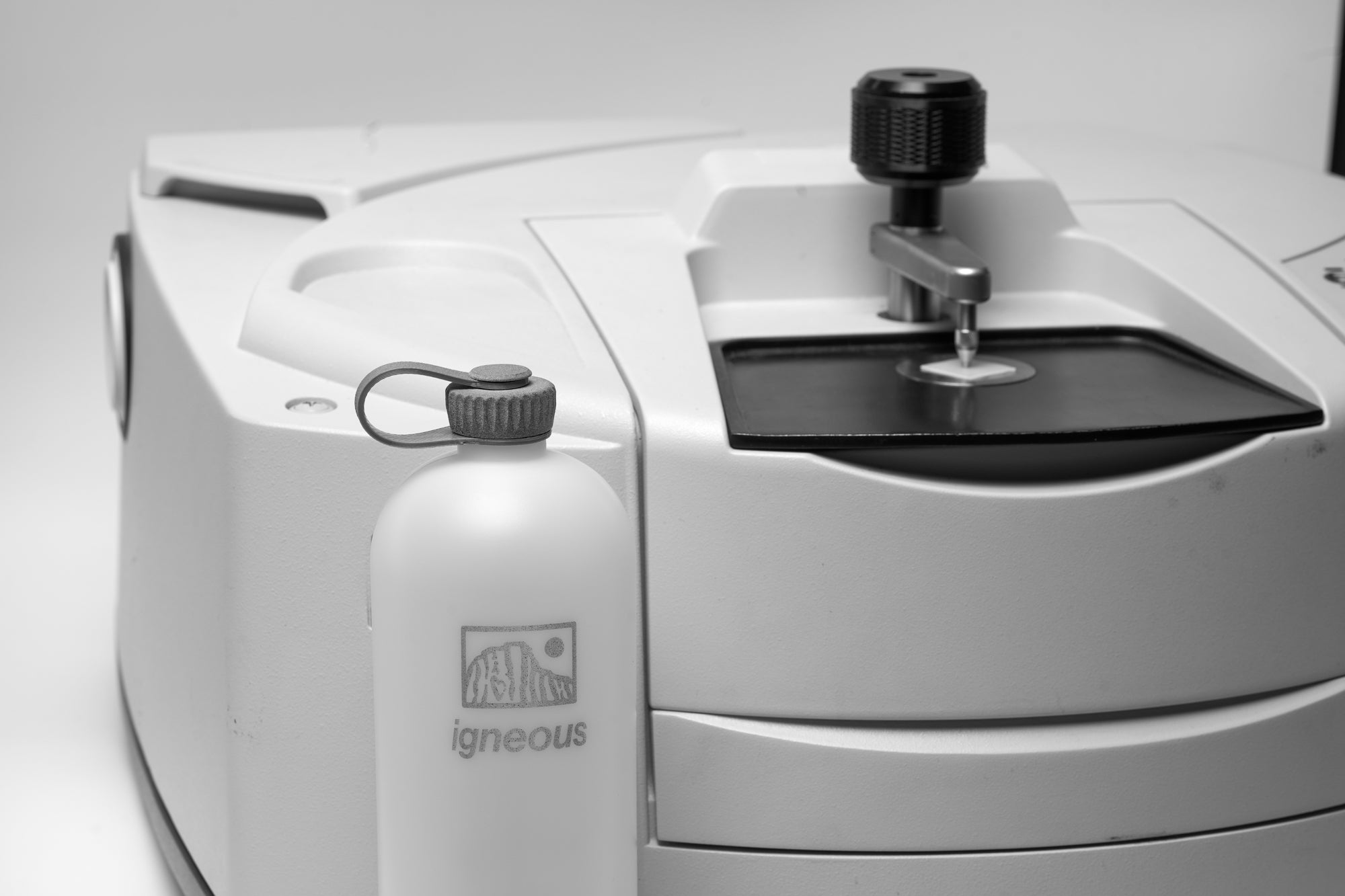Thru-hiking is an adventure that demands self-reliance, and one of the most critical skills you can have on the trail is the ability to repair your gear on the fly. When you’re miles from the nearest town, a small tear in your tent or a puncture in your sleeping pad can quickly turn into a trip-ending disaster if you’re not prepared. For ultralight backpackers and thru-hikers tackling trails like the Pacific Crest Trail or the Appalachian Trail, every gram counts—but so does durability. That’s why having the right repair tools in your pack is essential.
In this guide, we’ll explore ultralight repair options for two of the most common gear failures: fabric tears (in tents, jackets, or packs) and punctured inflatables (like sleeping pads or water bladders). We’ll highlight premium solutions, like the Threadlock Patch and Airlock Patch from Igneous Gear, which are designed for hikers who demand the lightest, most durable fixes. But we’ll also cover more affordable alternatives, so you can choose what works best for your budget and needs. Whether you’re a gram-counter chasing an FKT or a weekend warrior, this post will help you stay prepared without weighing you down.
Repairing Fabric Tears: Ultralight Solutions for Tents, Jackets, and Packs
Fabric tears are inevitable on long hikes—whether from a rogue branch, a sharp rock, or just the wear and tear of daily use. The key is to fix them quickly and effectively, so you can keep moving. Here’s a look at the best ultralight repair options, from premium patches to budget-friendly fixes.
Premium Option: Igneous Gear Threadlock Patch
- What It Is: The Threadlock Patch is a woven polyester patch with an adhesive backing, weighing just 0.28 grams per patch. At 28mm x 36mm with rounded corners, it’s designed to conform to gear contours and bond seamlessly to technical fabrics like jackets, tents, and packs.
- Why It’s Great: This patch is built for thru-hikers who need a fix that’s as durable as it is lightweight. The woven polyester mimics the resilience of high-end fabrics, flexing without fraying, while the adhesive creates a molecular grip that holds strong through rain, rocks, and relentless pack wear. It’s also incredibly easy to use: just clean and dry the surface, apply the patch, and press firmly—no tools required.
- Best For: Hikers who prioritize weight savings and long-term durability, especially on multi-month treks.
Affordable Alternatives
- Duct Tape: The classic trail fix, duct tape is cheap, widely available, and versatile. It can patch tears in a pinch, but it’s heavier than specialized patches and tends to peel off in wet or rough conditions. If you’re on a tight budget, it’s a decent short-term solution—but expect to reapply it.
- Other Repair Patches: Brands like Tenacious Tape offer nylon or silicone-based patches that are more durable than duct tape and still relatively affordable. They’re a step up in quality but may not be as light or flexible as the Threadlock Patch.
- Sewing: For larger tears, sewing with a needle and thread can be effective, especially if you’re skilled with a repair kit. It’s time-consuming and less practical in bad weather, but it’s a low-cost, long-lasting fix if you have the patience.
Comparison Table: Fabric Tear Repair Options
| Method | Weight | Durability | Ease of Use | Cost |
|---|---|---|---|---|
| Threadlock Patch | 0.28g/patch | High | Very Easy | Premium |
| Duct Tape | Heavy | Low | Easy | Affordable |
| Other Repair Patches | Varies | Moderate | Easy | Moderate |
| Sewing | Varies | High | Difficult | Low (if equipped) |
Why Choose Premium? The Threadlock Patch’s ultralight design and superior adhesive make it ideal for hikers who can’t afford to carry extra weight or risk a failed repair. But if you’re on a budget, duct tape or other patches can still get you through shorter trips—just be prepared for potential reapplication.
Repairing Punctured Inflatables: Keeping Your Sleeping Pad and Water Bladder Leak-Free
A punctured sleeping pad or water bladder can turn a restful night into a miserable one—or worse, leave you without hydration. Here’s how to fix inflatables on the trail with ultralight solutions, from premium patches to budget-friendly alternatives.
Premium Option: Igneous Gear Airlock Patch
- What It Is: The Airlock Patch is a transparent TPU (thermoplastic polyurethane) patch with an adhesive backing, weighing just 0.39 grams per patch. Sized at 28mm x 36mm with rounded corners, it’s designed to fuse seamlessly to inflatables like sleeping pads and water bladders.
- Why It’s Great: This patch is engineered for thru-hikers who need a fix that’s both ultralight and ultra-durable. The TPU material is flexible and airtight, while the adhesive chemically welds to the inflatable, creating a seal that can withstand pressure and rough terrain. To use it, clean and dry the surface, apply the patch, and wait 4 hours for maximum bond strength. It’s a set-it-and-forget-it solution that won’t add bulk to your pack.
- Best For: Hikers who want a long-lasting, nearly invisible repair that won’t compromise their gear’s performance.
Affordable Alternatives
- Manufacturer’s Patch Kits: Many sleeping pads and water bladders come with small patch kits included. These are usually free and tailored to the specific gear, but they may not be as lightweight or durable as premium options. They’re a good starting point if you’re in a pinch.
- Generic Patch Kits: Available at most outdoor retailers, these kits are affordable and can work for various inflatables. However, the patches are often heavier and less flexible than TPU, and the adhesive may not hold up as well over time.
- Silicone Sealants: For small punctures, silicone-based sealants like Seam Grip can be used, but they’re messy, take longer to dry, and aren’t as durable as a proper patch. They’re best for temporary fixes.
Comparison Table: Punctured Inflatable Repair Options
| Method | Weight | Durability | Ease of Use | Cost |
|---|---|---|---|---|
| Airlock Patch | 0.39g/patch | High | Easy (4hr wait) | Premium |
| Manufacturer’s Patch Kits | Varies | Moderate | Easy | Low to Moderate |
| Generic Patch Kits | Varies | Moderate | Easy | Affordable |
| Silicone Sealants | Varies | Low | Moderate | Affordable |
Why Choose Premium? The Airlock Patch’s combination of ultralight weight, strong adhesive, and flexible TPU material makes it the go-to choice for hikers who need a reliable, long-term fix. But if you’re looking to save money, manufacturer-provided kits or generic patches can still keep your gear functional—just be aware they might not last as long or be as seamless.
Why Material Matters: Woven Polyester and TPU Explained
When it comes to ultralight repairs, the materials used in your patches can make all the difference. Here’s why the Threadlock Patch and Airlock Patch stand out:
- Woven Polyester (Threadlock Patch): This material is incredibly resilient, mimicking the flexibility and strength of high-end technical fabrics. It’s designed to move with your gear, not against it, reducing the risk of fraying or peeling. Plus, at just 0.28g per patch, it’s lighter than most alternatives.
- TPU (Airlock Patch): Thermoplastic polyurethane is the gold standard for inflatable repairs because it’s airtight, flexible, and bonds seamlessly to similar materials. The transparency of the Airlock Patch also means your repair won’t look like a patchwork job—it’ll blend right in.
While duct tape and generic patches can work, they often use heavier, less flexible materials that don’t hold up as well under the strain of long-distance hiking. For thru-hikers, investing in premium materials can mean fewer repairs down the line.
Conclusion: Choose What Works for You
Gear failures are part of the thru-hiking experience, but with the right repair tools, they don’t have to derail your trip. Premium options like the Igneous Gear Threadlock Patch and Airlock Patch offer the best of both worlds: ultralight weight and unmatched durability. They’re designed for hikers who demand top performance from their gear, mile after mile.
But if you’re on a budget, don’t worry—there are plenty of affordable alternatives that can still get the job done. Duct tape, generic patches, and even sewing can keep you moving forward, especially on shorter trips or less demanding terrain. The key is to be prepared and choose the option that fits your needs, whether that’s a premium patch or a roll of duct tape.
No matter what you pick, remember: a small repair today can save you from a big headache tomorrow. Happy trails!



